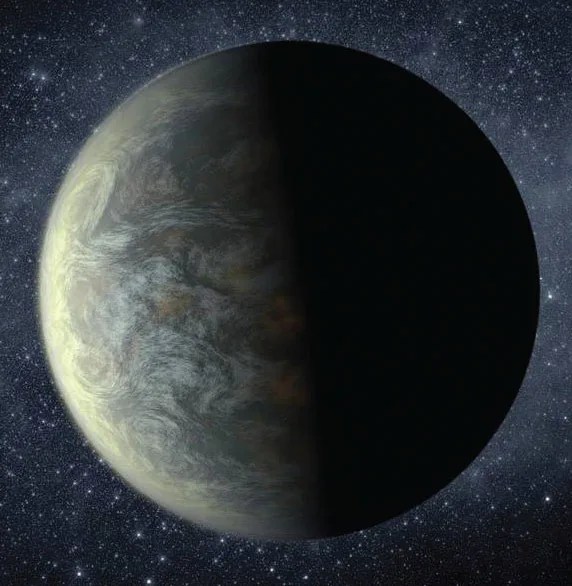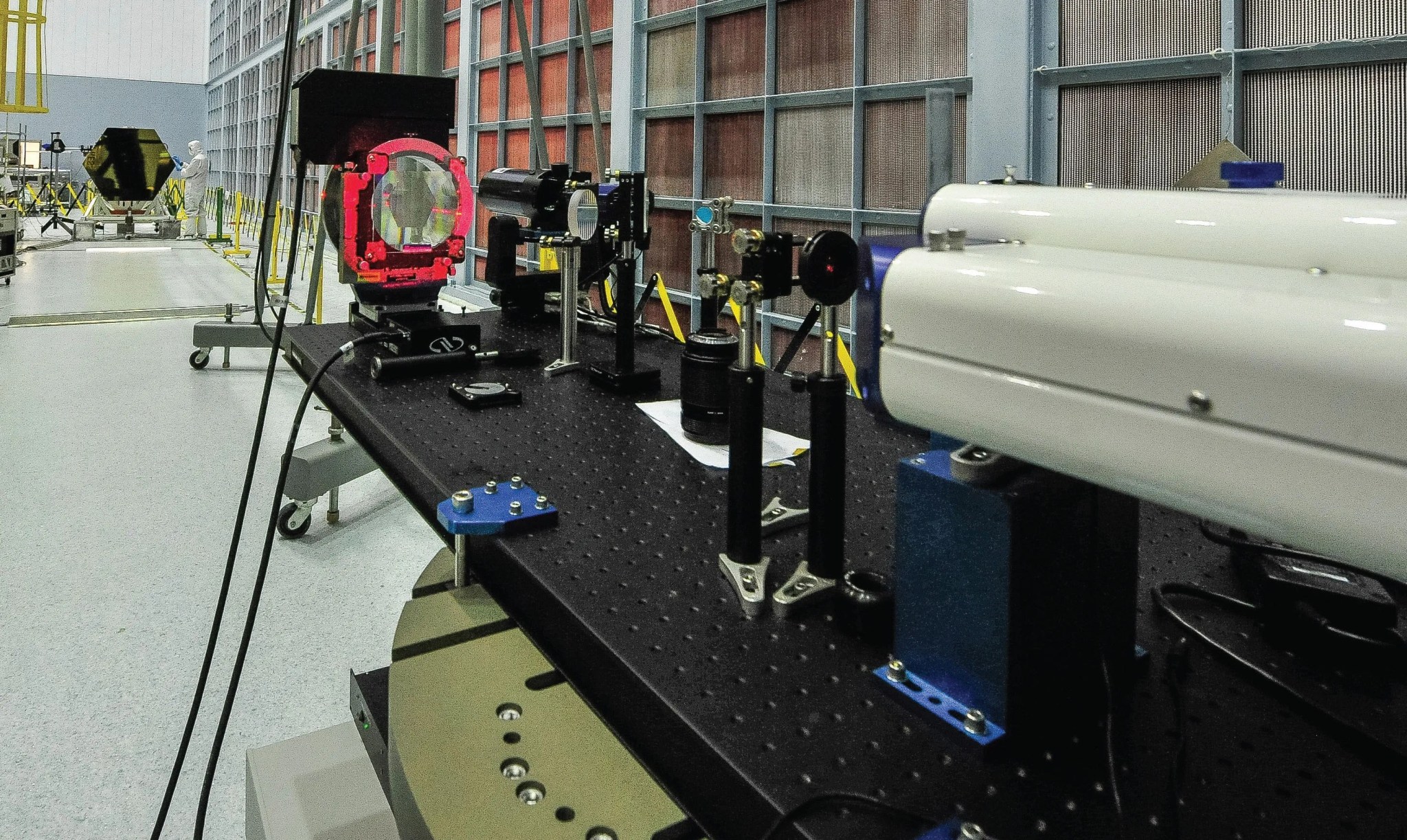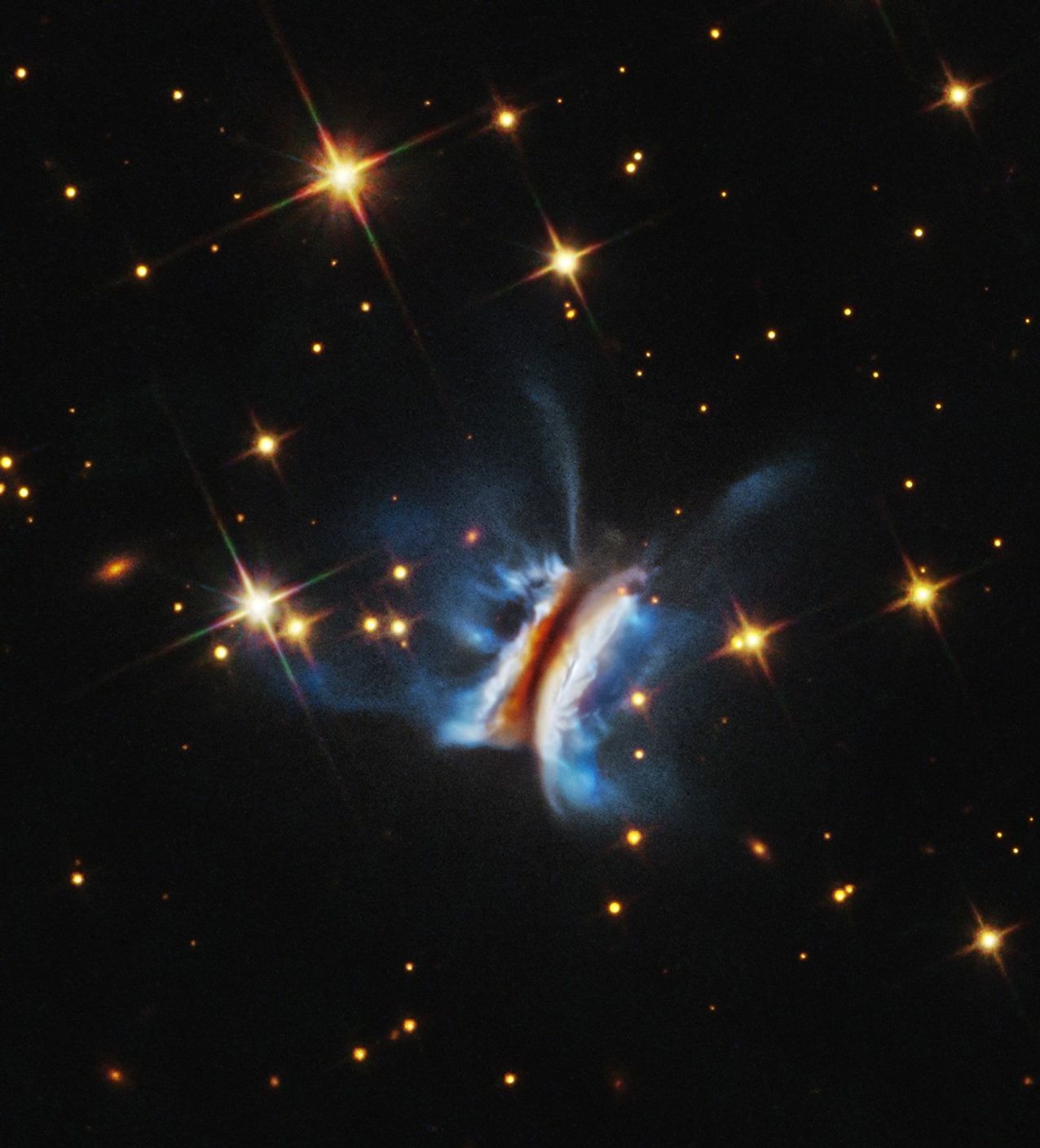Technology Development
A team of NASA optics experts has built a picometer spatial metrology system that may enable a major Agency initiative—to locate and image Earth-like planets beyond the solar system and scrutinize their atmospheres for signs of life. Researchers at Goddard Space Flight Center (GSFC), in conjunction with collaborators at the Space Telescope Science Institute in Baltimore, have demonstrated for the first time the ability to dynamically detect subatomic-sized distortions—changes that are far smaller than an atom—across a five-foot segmented telescope mirror and its support structure.
To detect life on a distant planet, an observatory would have to gather and focus enough light to distinguish the planet’s light from that of its much brighter parent star and then be able to dissect that light to discern different atmospheric chemical signatures, such as oxygen and methane. These tasks would require a super-stable, spaceborne observatory whose optical components move or distort no more than 12 picometers—which is about one-tenth the diameter of a hydrogen atom. NASA has not yet built an observatory that meets these demanding stability requirements, and design and implementation of such a stable telescope will require the capability to detect and measure extremely small displacements and movements.
In 2017, the GSFC team used the High-Speed Interferometer (HSI)—an instrument developed by Arizona-based 4D Technology—to measure nanometer-sized dynamic changes in a spare, five-foot mirror segment built for the James Webb Space Telescope (JWST). The test segment included 18 mirror segments, mounts, and supporting structure and the team measured displacements that occurred during thermal, vibration, and other types of environmental testing. Although HSI was designed to measure nanometer- or molecule-sized distortions (the design standard for JWST) the team developed special algorithms that enabled HSI to successfully detect dynamic movement as small as 25 picometers—about half of the desired 12-picometer accuracy.
Impact
The ability to measure such small-scale displacements may enable a future mission (e.g., the Large Ultraviolet/Optical/Infrared Surveyor, or LUVOIR) that will use a large-aperture, segmented, spaceborne telescope not only to conduct general ultraviolet-optical infrared astrophysics, but to search for life on Earth-like planets.
Future Plans
NASA continues to advance the capability to detect subatomic displacement; the GSFC team and 4D Technology have designed a new high-speed instrument, called a speckle interferometer, that allows measurements of both reflective and diffuse surfaces at picometer accuracies. Researchers at GSFC have begun initial characterization of the instrument’s performance in a thermal-vacuum test chamber to determine if they can achieve the 12-picometer target accuracy. The team is also evaluating other technologies to relax the requirements so that mission designers do not have to accommodate picometer-level constraints.
Sponsoring Organization
The SMD Astrophysics Division is providing funding for this technology development to Principal Investigator (PI) Babak Saif at NASA GSFC via the SAT program.



































